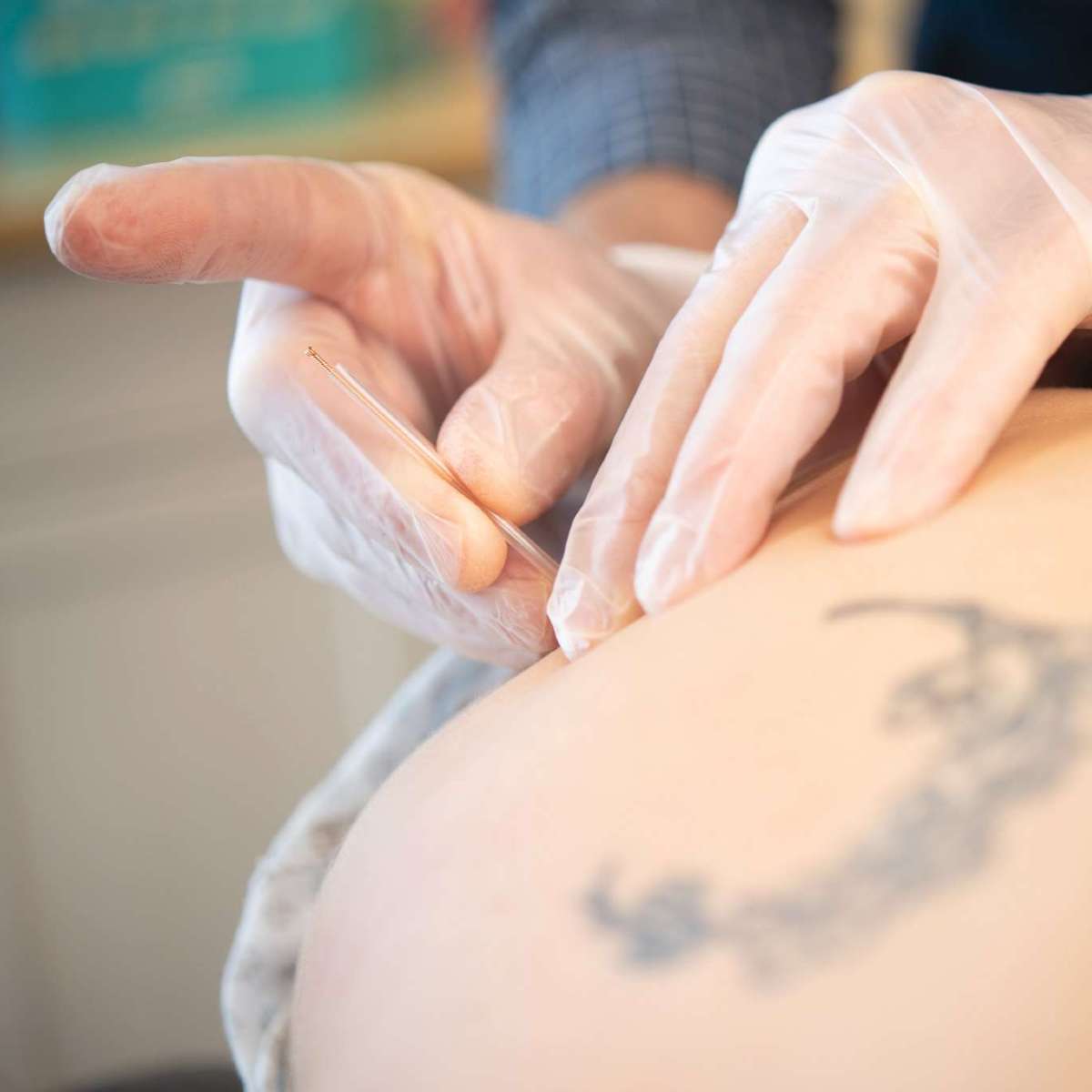Intramuscular Stimulation (IMS)
IMS is a modern neuromuscular treatment used to treat acute injuries and persistent, recurring chronic conditions.

What is intramuscular stimulation?
Intramuscular Stimulation, or simply IMS, treatments use acupuncture needles inserted into the region of a tight muscle or known nerve supply in order to improve both acute and chronic conditions.
How do IMS needles work?
Well-placed IMS needles induce a reflex response that causes a shortened muscle to relax and lengthen. This response beneficially affects both the local muscle as well as the neurological connections to that muscle.
Are IMS needles filled with anything?
No. IMS needling does not involve the injection of any substance into the tissue. IMS is known as a “dry needling” technique, used to reduce chronic muscular tension and excess neurological excitation of an area.
Where is IMS most beneficial?
IMS is particularly well-suited to any condition where chronic muscle shortening or tightness is implicated. The changes to long-standing muscle tension and nerve excitability can be quite profound, and often benefit the local musculature as well as the painful joints affected by these muscles.
Is IMS the same as Trigger Point therapy?
No. While they are similar, IMS involves a much more substantial neuropathic approach than Trigger Point therapy. With IMS, needles are often also inserted along nerve pathways, or at nerve roots, as well as at associated or antagonist muscles for a more comprehensive effect.
How do I know if IMS is right for me?
During your initial appointment, your physiotherapist will perform a detailed history and examination to determine if IMS is an appropriate treatment. You will discuss the benefits and any risks with your therapist before getting started and can withdraw your consent for treatment at any time.
Can I try IMS during my assessment?
Your first visit consists of a thorough, hands-on assessment. If IMS is determined to be appropriate for your condition, your physiotherapist may begin with a trial of two or four needles. The amount of needling will be progressed gradually and comfortably.
How does intramuscular stimulation help?
IMS works by:
- Inserting acupuncture needles into muscular tissue, or in the vicinity of a nerve root supplying an area.
- Targeting shortened muscles, or their nerve supply, to produce a cramping or aching sensation.
- Keeping the needle in place until this sensation dissipates before being removed.
Which in turn produces:
- A natural relaxation and lengthening of the muscle, which decreases tension and pain.
- Improved electrical communication between the nervous system and muscle, which improves overall nerve function.
- A minor injury to the muscle, which draws blood to the area to stimulate healing.

What is intramuscular stimulation used for?
General chronic pain ailments
IMS is often used on a particular group of conditions referred to as persistent myofascial pain syndromes:
- Bursal and tendon pain
- Neuropathies
- Joint pain (even if the joint is deteriorated)
- Pain that presents with no obvious cause of tissue inflammation (i.e., there is no other known underlying condition)
- Reduced ranges of motion
- Biomechanical or compensatory movement patterns
- Chronic muscle tension that just won’t stretch out
Specific chronic & acute conditions
IMS can be extremely effective on:
- Trochanteric Bursitis
- Rotator Cuff issues
- Lumbar Spinal Stenosis
- Cervical Spinal Stenosis
- Tennis Elbow
- Post-exercise muscle stiffness
- Iliotibial (IT) Band Syndrome
- Achilles Tendinitis/Tendinosis
- Low back pain
- Piriformis Syndrome
- Chronic headaches (especially when originating on the back of the skull)
- Temporomandibular Joint (TMJ) pain
- Recovering muscle tears (hamstring or quads, for example)
- Whiplash
Further reading
View the articles below to learn more about IMS, including background information, techniques, effects, and the differences between IMS and acupuncture.
An Overview of Intramuscular Stimulation
Authored by Pinpoint Physiotherapy’s Joe Box.
Intramuscular Stimulation (IMS)
Authored by Sang-Chul Lee and Young-Jae Kim.
Get Started with Intramuscular Stimulation
Have questions about Intramuscular Stimulation or any other treatments? Visit the FAQs page or get in touch for help.


